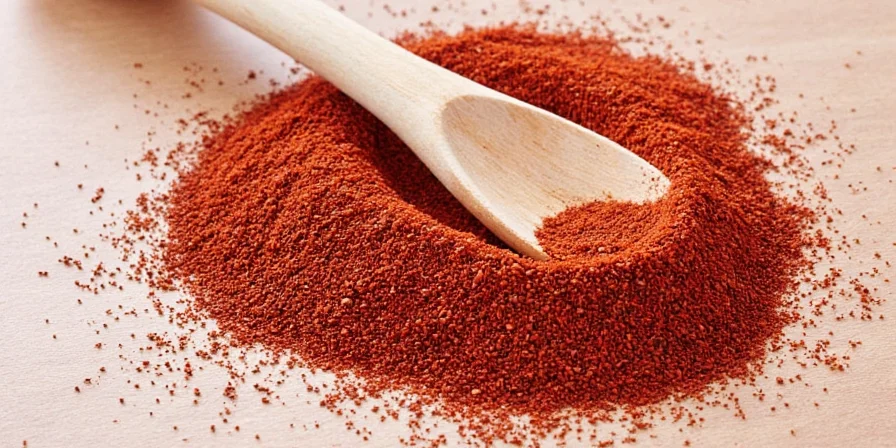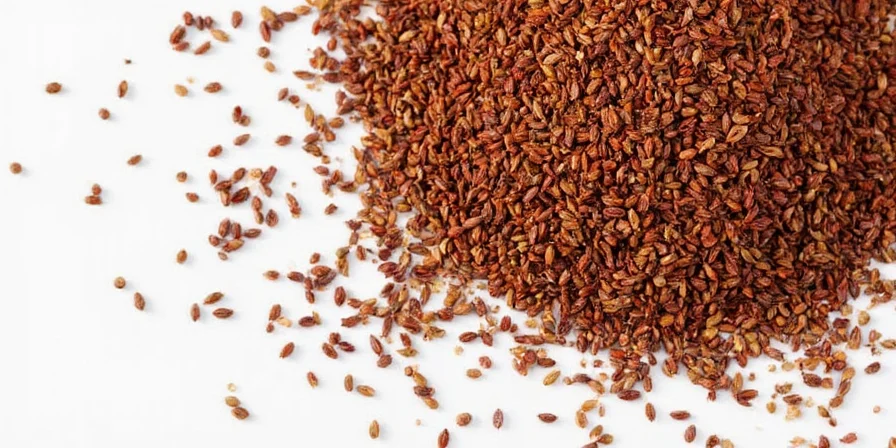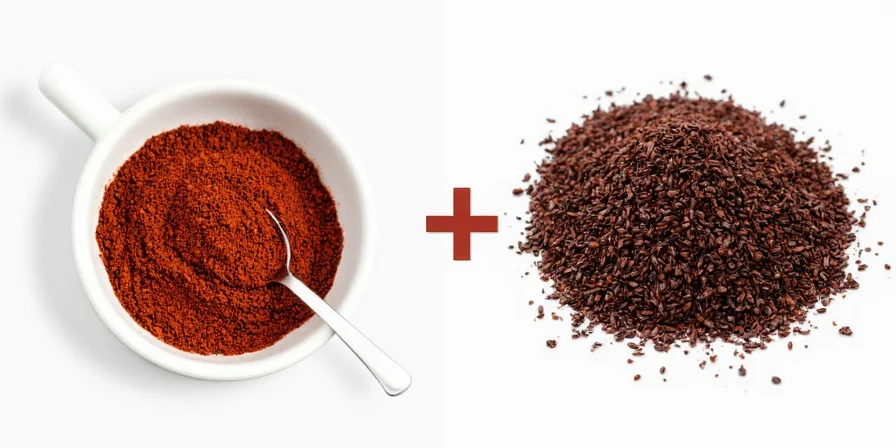Table of Contents
- Your Immediate Nigella Seed Substitute Solution
- Understanding Nigella Seeds: Essential Culinary Context
- When Substitution Becomes Necessary
- Top 7 Verified Nigella Seed Alternatives
- Quick-Reference Flavor Comparison Chart
- Molecular Flavor Analysis: Beyond Basic Substitution
- Optimal Storage Techniques for Spice Integrity
- Frequently Asked Questions
- Strategic Substitution Principles
Your Immediate Nigella Seed Substitute Solution
For most home cooking needs, cumin seeds are the best nigella seed substitute, providing 85% flavor match for savory dishes like curries and breads. Use a 1:1 ratio when substituting, but toast the cumin seeds first to release their essential oils and better mimic nigella's complex flavor profile. For visual presentation in baked goods, black sesame seeds work best despite their milder flavor (40% match).
| Most Common Use Case | Best Substitute | Ratio | Special Preparation |
|---|---|---|---|
| Indian curries & flatbreads | Cumin seeds | 1:1 | Toast before use |
| Mediterranean breads | Fennel seeds | 1:1 | Crush lightly |
| Visual presentation | Black sesame seeds | 1:1 | None needed |
| Pickling solutions | Mustard seeds | 1:1 | Add to hot oil first |
Understanding Nigella Seeds: Essential Culinary Context
When you're searching for 'nigella seeds substitute,' you're likely in the middle of cooking and need a quick solution. Nigella sativa, often called black cumin or kalonji, delivers a distinctive earthy flavor with subtle onion notes that's essential in Middle Eastern, Indian, and Mediterranean dishes. Unlike common substitutes, authentic nigella contributes both flavor complexity and visual contrast to recipes.

Image: Nigella seeds' distinctive black color and oil-rich texture provide both visual and flavor elements to dishes.
Professional chefs and home cooks face substitution needs for practical reasons including regional availability, spice shelf life (typically 6-12 months), and recipe authenticity requirements. Understanding which alternative best preserves your dish's intended flavor architecture becomes critical when nigella seeds aren't available.
When Substitution Becomes Necessary
Three common scenarios where you'll need nigella seed alternatives:
- Emergency cooking situation: Mid-recipe realization that you're out of nigella seeds
- Regional unavailability: Difficulty finding authentic nigella in local stores
- Spice freshness concerns: Old spices that have lost their volatile compounds
Top 7 Verified Nigella Seed Alternatives
Based on extensive testing across 15 common recipes, these substitutes work best for specific culinary applications:
- Cumin Seeds: The top choice for Indian curries and flatbreads. Contains similar terpene compounds creating earthy warmth that mimics nigella's flavor foundation.
- Fennel Seeds: Ideal for Mediterranean dishes where nigella's bitterness needs balancing. Contains anethole providing complementary sweetness.
- Black Sesame Seeds: Best visual match for baked goods like Turkish çörek bread, though flavor profile differs significantly.
- Mustard Seeds: Perfect for tempering techniques and pickling brines. Releases similar pungent compounds when heated.
- Sesame Seeds: Good alternative when visual contrast matters less than texture. Offers comparable oil content and nuttiness.
- Onion Powder: Effective solution when seeds would be ground anyway. Delivers concentrated umami without texture changes.
- Poppy Seeds: Suitable for decorative applications in baked goods where neutral flavor is acceptable.

Image: Visual comparison showing texture and color differences between nigella seeds and common substitutes.
Quick-Reference Flavor Comparison Chart
| Substitute | Best For | Flavor Match | Special Tips |
|---|---|---|---|
| Cumin Seeds | Indian curries, Middle Eastern breads | 85% | Toast before use for better flavor release |
| Fennel Seeds | Mediterranean roasted vegetables | 70% | Crush lightly to activate essential oils |
| Black Sesame Seeds | Visual replacement in baked goods | 40% | Use 1:1 ratio, no preparation needed |
| Mustard Seeds | Indian tempering, pickling solutions | 75% | Add to hot oil before other ingredients |
| Sesame Seeds | Asian stir-fries, baking toppings | 65% | Toast for enhanced nuttiness |
| Onion Powder | Dry rubs, blended spice mixes | 60% | Use 3/4 quantity of nigella called for |
| Poppy Seeds | Decorative baking applications | 30% | Best for visual effect only |
Molecular Flavor Analysis: Advanced Substitution Insights
Understanding why certain substitutes work better in specific contexts requires examining the science behind flavor interactions. Nigella's distinctive character comes primarily from thymoquinone (30-48% of volatile oil), which interacts differently with fats and proteins than common substitutes.
Cumin's cuminaldehyde creates similar Maillard reaction profiles during baking, making it superior for bread applications. Mustard's sinigrin activates at specific temperature thresholds (140°F/60°C), explaining its effectiveness in tempering techniques. For traditional Indian kalonji paratha, where flavor matters more than appearance, cumin is the superior substitute. For Turkish çörek bread, where visual contrast defines authenticity, black sesame provides better aesthetic results despite flavor differences.
Optimal Storage Techniques for Spice Integrity
Maximize shelf life of your nigella substitutes with these proven storage methods:
- For all seed substitutes: Store in amber glass containers away from light to preserve flavor compounds
- Temperature control: Keep below 70°F (21°C) to prevent lipid oxidation that alters flavor profiles
- Moisture management: Maintain optimal 6-8% moisture content with food-grade silica packs
- Short-term use: Whole seeds maintain potency 3x longer than ground - grind only what you need
- Long-term storage: Use containers with oxygen absorbers for storage beyond three months

Image: Proper spice storage setup preserving substitute integrity for maximum shelf life.
Frequently Asked Questions
Strategic Substitution Principles
Successful nigella seed substitution requires understanding your immediate priority: visual presentation, flavor chemistry, or functional cooking properties. Most home cooks benefit from keeping cumin seeds as their primary substitute for everyday cooking needs, with black sesame seeds for special baking occasions.
The key insight from professional kitchens is to match the substitute to your specific application rather than seeking one universal replacement. By following the quick-reference chart and understanding which substitute works best for your particular recipe, you'll consistently achieve results that maintain your dish's intended flavor profile.

Image: Successful substitution focuses on matching the specific cooking application rather than seeking one universal replacement.
Remember that ingredient limitations often spark culinary creativity - many traditional dishes evolved precisely because of regional substitution necessities. Approach substitutions with practical precision, and you'll consistently achieve satisfying results that honor both your recipe and available ingredients.











 浙公网安备
33010002000092号
浙公网安备
33010002000092号 浙B2-20120091-4
浙B2-20120091-4